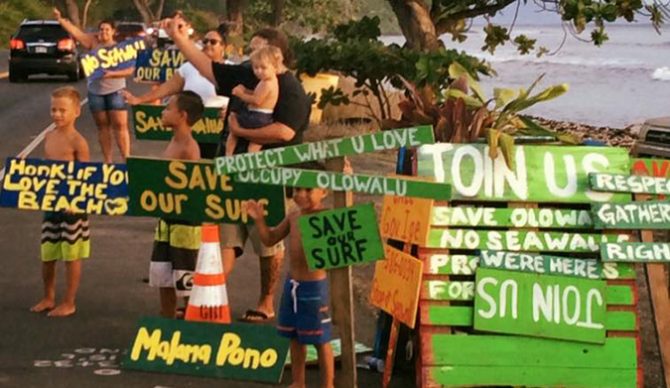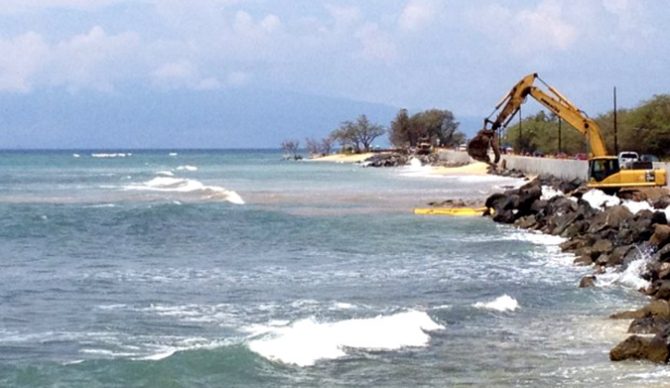
Project Clean Uluwatu
There seems to be a lot of talk about walls these days. Presidential hopeful Donald Trump has his two small hands full, with a duo of controversial walls he hopes to build. One of those measures 1.7 miles (2.8 km) long and 15 feet (5m) tall – which is more plausible to be built than his Mexican border monstrosity – threatens the existence of a perfect beach break in Ireland at Doughmore beach. Locals there have stepped up against the project and with the help of Save the Waves , plan to permanently protect the area. With a changing climate, fights like these are becoming all too common.

Malama Olowalu
On the south shore of Maui, a grassroots collective known as Malama Olowalu, gathered signatures and protesters to battle against a plan to bolster the current road along an area known as Olowalu. This area is home to prime fishing grounds and the largest and oldest network of coral reefs on the island, which provides habitat for endangered organisms and of course, consistent south swell surf. The road there is succumbing to natural erosion and sea level rise and the community is urging the county to move the current road further inland rather than stubbornly building a wall. This movement caught the eyes of local politicians, who surprisingly acted quickly to halt the project , ending what could have been a disastrous attempt to thwart nature’s advance.

Recently on the Atlantic Island of Madeira, I found out first hand what can happen if coastal embankments go unchecked by a public who cares. The majority of the island’s coastal land has been buffered by concrete breakwaters or other sediment. In some areas it has caused some of its most cherished waves to be plagued with backwash. On Bali, the wave called Nikkos suffered the same fate as the nearby hotel called Kepinski illegally built a pier into the line-up and on top of the reef below, ruining it forever. The list goes on.
Although plenty of seawalls and barricades have been constructed in the past, the future seems to present a unique challenge at a scale never seen before. With the combination of climate change altering the level of our seas and humanity’s inability to foresee and accept inevitable change, our favorite beaches, surf breaks and marine ecosystems will likely become increasingly threatened by embankment projects. Besides the physical destruction they cause wherever they’re built, seawalls hinder the natural flow of sand through tides and swell on beaches. This leads to sand being displaced over a larger area, where the beach will eventually erode, choking out biodiversity and affecting surf in the process. They are also extraordinarily expensive to build. Some have completely given up hope due to the expenses and logistics involved. The low lying Island nation of Kirabati, for example, has already purchased eight square miles (20 sq km) in nearby Fiji to one day evacuate its entire population of over 100,000 people.
Not all of these projects are so unfortunate, however, and steps can be taken to preserve treasured coasts. Cooperation between ecologists and engineers will most likely be necessary to mitigate impacts as rising sea levels infringe on infrastructure. For now, rallying up and taking a stand against the powers that be seems to be the most effective way to initiate change. Wall building is probably the oldest and simplest form of construction. With changing times and thousands of years of tradition it’s time for us to evolve and find a more harmonious solution.

